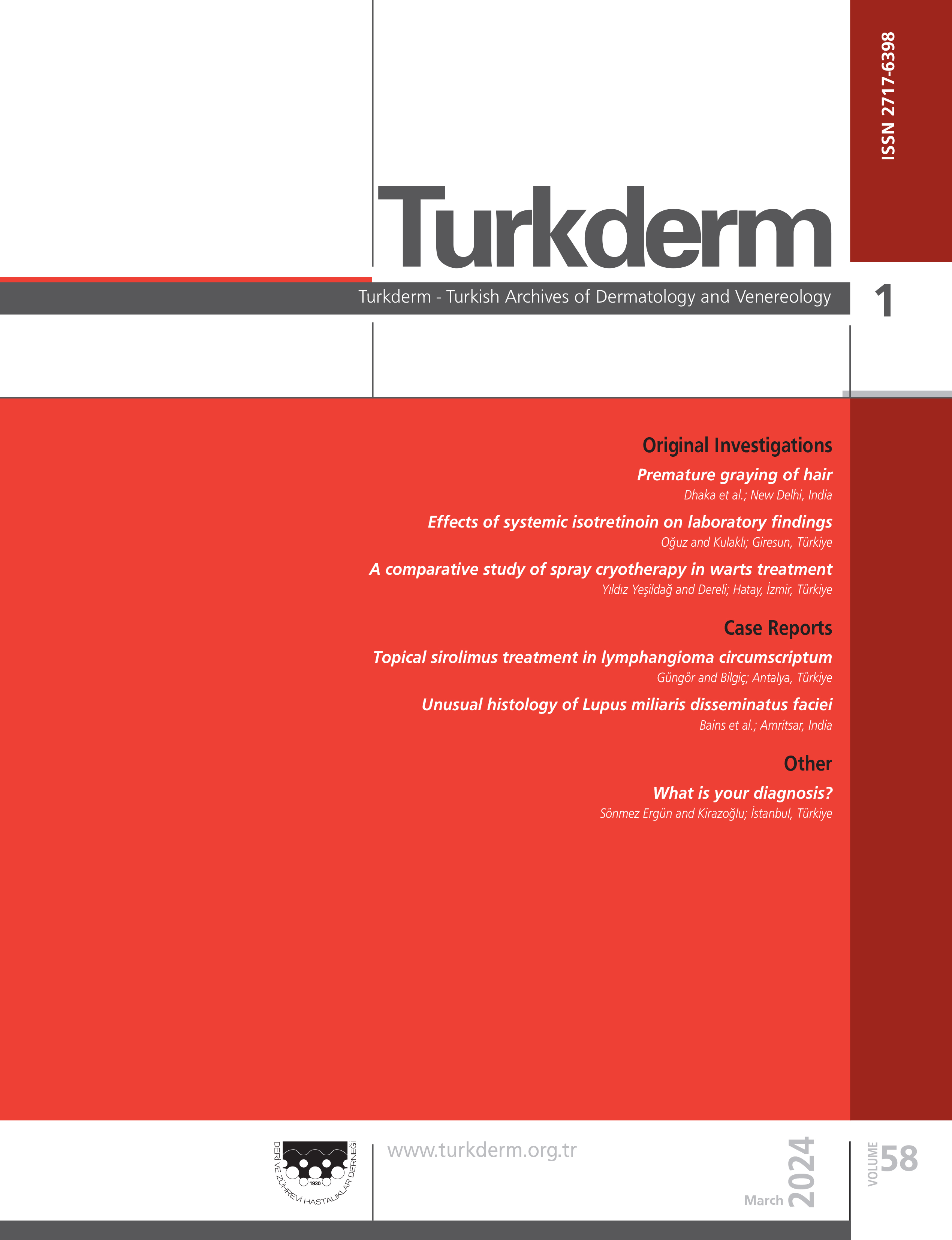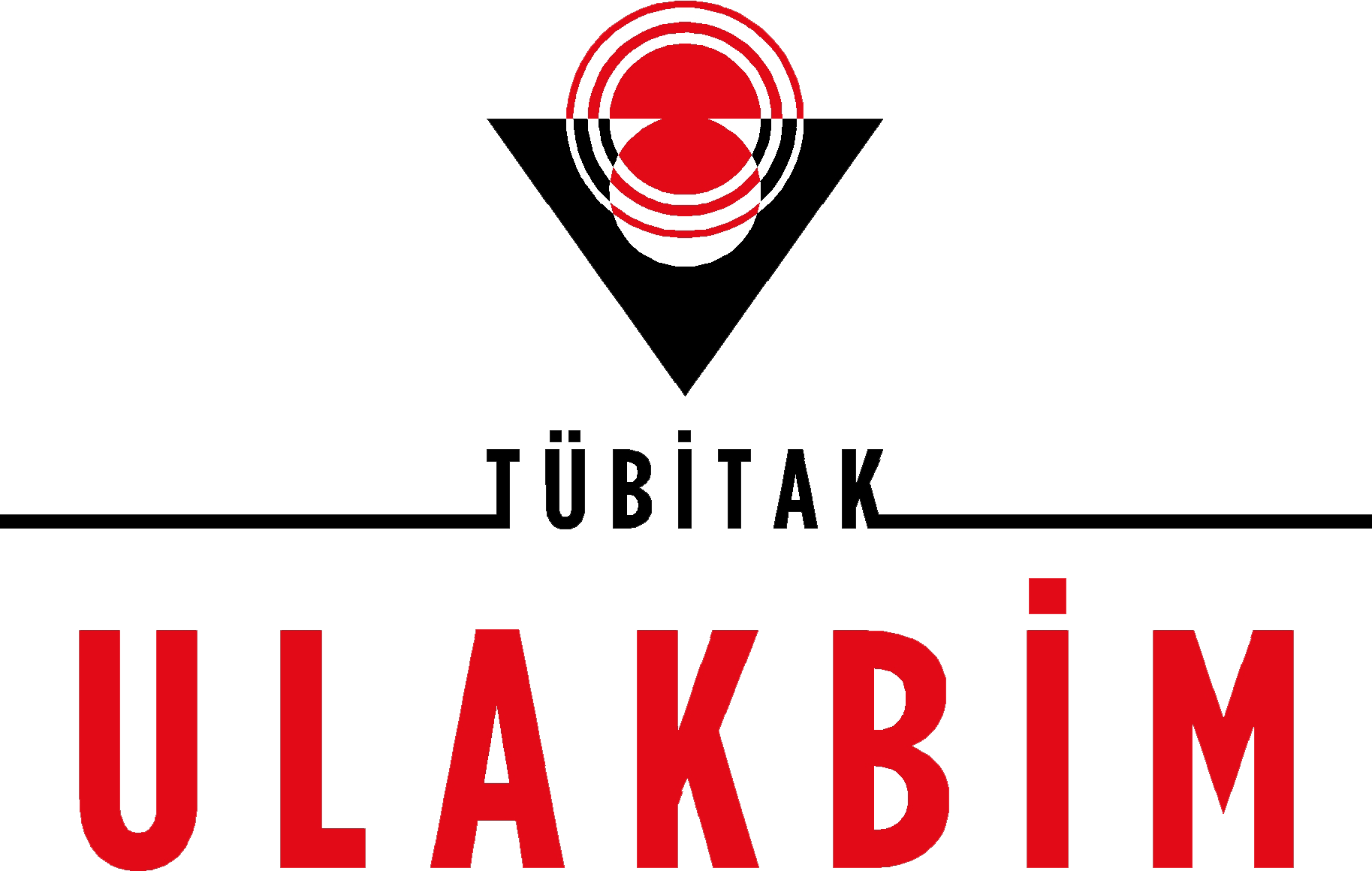Quality of life in lepromatous leprosy patients
Betül Demir1, Haydar Uçak2, Selma Bakar Dertlioğlu1, Şükrü Demir3, Kubilay Güler4, Demet Çiçek1, Nurhan Halisdemir51Department Of Dermatology, Fırat University, Elazığ, Turkey2Department of Dermatology, Dicle University Faculty of Medicine,Diyarbakir, Turkey
3Orthopaedics and Traumatology Clinic, Elazig Education and Research Hospital, Istanbul, Turkey
4Ophthalmology Clinic, Elazig Education and Research Hospital, Istanbul, Turkey
5Department of Statistics, Elazig, Firat University Faculty of Medicine, Turkey
Background and Design: Leprosy is a chronic infectious disease caused by Mycobacterium leprae bacillus affecting the skin and peripheral nervous system. Leprosy can lead to severe deformities depending on the extent of the disease. In this study, we aimed to investigate the quality of life of patients with lepromatous leprosy.
Materials and Methods: Thirty-five patients with lepromatous leprosy and 35 healthy controls were included in the study. The patients were evaluated with the Turkish version of the Dermatology Life Quality Index (DLQI) and the 36-Item Short Form Health Survey (SF-36). The relationship of quality of life with age, gender, marital status, and the grade of the visual impairment was studied and compared with the healthy controls.
Results: Total and all the subgroup DLQI scores were higher in the leprosy group than in the control group (p<0.05). The patients with grade 2 visual impairment were more severely affected by the disease with regard to symptoms/feelings and school/work life as compared to the patients with grade 1 visual impairment (p=0.04, p=0.03, respectively). SF-36 physical functioning, physical role functioning, general health perceptions, vitality, social role functioning, and emotional role functioning scores were statistically lower in the patient group than in the control group (p<0.05).
Conclusion: We observed that DLQI scores were lower in patients with lepromatous leprosy than in the control group, while increasing impairment in eyes was found to have a negative impact on quality of life. The SF-36 revealed that physical functioning, physical role functioning, general health perceptions, vitality, social role functioning, emotional role functioning, and mental health were negatively influenced in patients with lepromatous leprosy.
Lepromatöz lepralı hastaların yaşam kalitesi
Betül Demir1, Haydar Uçak2, Selma Bakar Dertlioğlu1, Şükrü Demir3, Kubilay Güler4, Demet Çiçek1, Nurhan Halisdemir51Fırat Üniversitesi Tıp Fakültesi, Deri Ve Zührevi Hastalıklar,2Dicle Üniversitesi Tıp Fakültesi, Dermatoloji Ana Bilim Dalı, Diyarbakır, Türkiye
3Elazığ Eğitim Ve Araştırma Hastanesi, Ortopedi Ve Travmatoloji Kliniği, Elazığ, Türkiye
4Elazığ Eğitim ve Araştırma Hastanesi, Göz Hastalıkları Kliniği, Elazığ, Türkiye
5Fırat Üniversitesi Tıp Fakültesi, İstatistik Anabilim Dalı, Elazığ, Türkiye
Amaç: Lepra Mycobacterium leprae basilinin neden olduğu deri ve periferik sinir sistemini etkileyen kronik granulomatöz bir infeksiyon hastalığı olup, tutulum derecesine bağlı olarak şiddetli deformitelere neden olabilmektedir. Bu çalışmada lepramatöz lepralı hastalarda yaşam kalitesini ölçmeyi amaçladık.
Gereç ve Yöntem: Otuz beş lepramatöz lepralı ve 35 sağlıklı kontrol çalışmaya alındı. Hastalara Dermatoloji Yaşam Kalite İndeksi (DYKİ) ve Kısa Form-36 (KF-36) anketi uygulandı. Yaşam kalitesi ile yaş, cinsiyet, evlilik durumu ve göz sakatlığının derecesi arasındaki ilişki ölçüldü ve sağlıklı kontrollerle karşılaştırıldı.
Bulgular: Lepralı hasta grubunda alt grupların tamamı ve toplam DYKİ skorunda sağlıklı kontrollere oranla anlamlı artış gözlendi (p<0,05). Görme sakatlığı düzeyi Evre 2 olan hastaların semptom/hisler ve okul/iş hayatı açısından Evre 1 olanlara oranla anlamlı düzeyde daha fazla etkilendiği saptandı (p=0,04, p=0,03, sırasıyla). Lepralı hasta grubunda KF-36 fiziksel fonksiyon, fiziksel rol güçlüğü, genel sağlık, vitalite, sosyal fonksiyon ve emosyonel rol güçlüğü skorları sağlıklı kontrol grubuyla karşılaştırıldığında, istatistiksel olarak daha düşük bulundu (p<0,05).
Sonuç: Biz lepramatöz lepralı hastalarda DYKİnin sağlıklı kontrollere kıyasla azaldığını, göz sakatlık düzeyi arttıkça yaşam kalitesinin olumsuz yönde etkilendiğini saptadık. KF-36 ile lepramatöz lepralı hastaların fiziksel fonksiyon, fiziksel rol güçlüğü, genel sağlık, vitalite, sosyal fonksiyon, emosyonel rol güçlüğü ve mental sağlık durumlarının olumsuz yönde etkilendiğini saptadık.
Corresponding Author: Betül Demir, Türkiye
Manuscript Language: Turkish






















